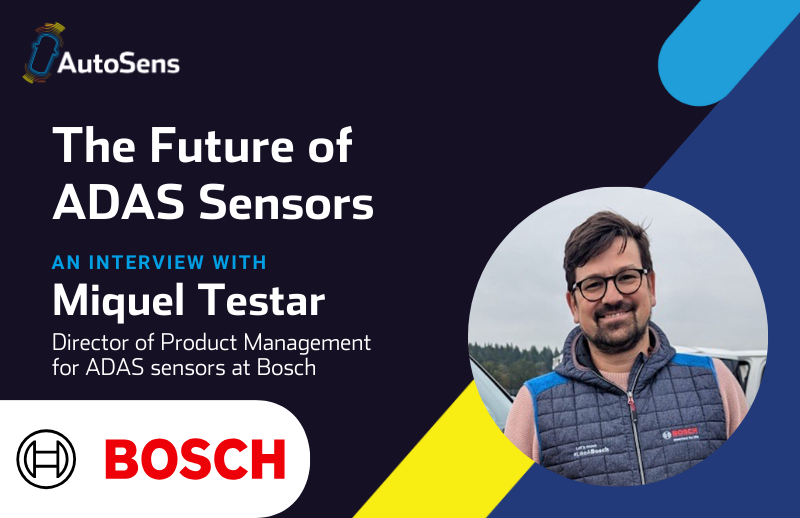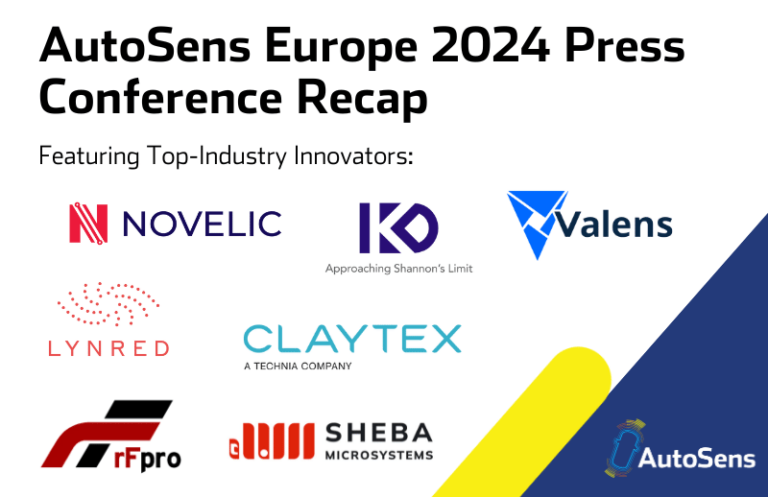LiDAR, which stands for Light Detection and Ranging, is a remote sensing method that uses light in the form of a pulsed laser to measure ranges (variable distances) to the Earth.
Sessions with LiDAR as their subject are very well-attended at AutoSens, and provide insights into the technical requirements of this sensor modality and what the future of LiDAR could look like. During an online AutoSens edition earlier this year, attendees heard from AEye and Continental with respect to bringing agility to the sensor.
Agility in the form of ultra-long ranges, wide field-of-view, software configurability, and instantaneous resolution that address the industry’s biggest pain points and toughest corner cases. ESPROS Photonics also posed the question… why not use the human eye and the human vision system as an example for future LiDAR systems?
The 2021 agenda for AutoSens in Brussels takes the opportunity to delve into the most recent development in LiDAR and supporting technologies and services. In the last quarter of 2020, five leading LiDAR companies executed or announced an IPO. These companies aim to provide high-performance, reliable, and affordable automotive LiDAR systems. However, each of them uses a different technological approach to achieve this goal. In parallel, tens of other companies are presenting their own unique approaches and many of these will feature at AutoSens, either presenting in the agenda or showcasing their company on our exhibition floor.
Which one of the approaches is the right one? How can they be compared and how can we evaluate their overall performance? Of course, the answer isn’t straightforward since the LiDAR system is a complex structure, with many inter-connected characteristics and multiple degrees of freedom.
Dima Sosnovsky, Principal System Architect, Huawei, believes that before choosing the right approach, a simple visual tool is required, which summarizes the most crucial characteristics and provides a common ground to compare each solution’s pros and cons. He is joining us at AutoSens to present a tool for such a comparison, by drawing a scoring envelope based on 8 major parameters of the LiDAR system, representing its performance, suitability to an automotive application, and business advantages.
LiDAR has been in explosive demands in ADAS and autonomous driving, but the so-called “LiDAR lag” persists. There are already LiDAR products providing excellent performance, so it could be determined that the current LiDAR lag is due to cost and manufacturability. There are several ways that companies are looking to meet the market expectations behind this LiDAR lag. Companies joining us at AutoSens will discuss some of their proposed solutions, including Samsung, who will introduce a chip-scale solid-state LiDAR technology, which promises the cost and manufacturability advantages inherited from silicon technology.
ADAS systems have specific cost and reliability requirements for technologies and up-front technology optimization is required to achieve these. Companies such as Cepton and Opsys are discovering that it is possible to adapt and scale the same tech architecture to serve different automotive sensing applications. Additionally, ADAS application requirements can be addressed via the modular design of LiDAR systems, at minimum costs.
LiDAR has been proven as an enabler for L3 Highway Pilot and L4 Autonomous truck cases, and, when coupled with perception software, can provide intelligent perception to transform transportation infrastructure by enabling next-generation applications such as smart intersections, traffic analytics and electronic free flow tolling.
Join us in-person this September at the Autoworld Museum in Brussels to hear about these developments and more.







